How to start and sustain a radical Black art school
This interview is part of Strange Futures, a new column hosted by Willa Köerner of The Strange Foundation, which features artists and organizers who are actively creating transformation in this moment. In this conversation, Willa sat down with designer Joseph Cuillier and artist Shani Peters—co-founders of The Black School—to hear more about their work to establish a model for community-based education in New Orleans.
How did The Black School get started? What gave you the idea?
For me, the idea started while I was in grad school, as a response to the educational experience. It was around the same time that Trayvon Martin’s killer, George Zimmerman, was let off. For me, it felt like this perfect storm of all these things that culminated in a great dissatisfaction with the European-white-male-centric emphasis within education.
I'm trained as a graphic designer. So for my thesis work, I was looking at social criticism and graphic design, and how different liberation movements were using typography to push their movements forward. Around that time I was also reading bell hooks’ Teaching to Transgress, and learning about different community-led schools throughout Black liberation movements like the Panther schools and SNCC freedom schools. That led me to start fantasizing about a radical Black art school that could take those movement tactics and that political education and approach to reasoning, and pair it with the types of design and artwork I was interested in—which was mostly socially engaged practices. So, I think that all led to this idea of The Black School.
While he was doing that, I was pursuing an art practice and teaching. Before I started to have any success with my art career, I imagined myself working for an arts non-profit—but I had this dream in the back of my mind of creating my own. This dream got bigger as I began to teach for other organizations, and wanted to put my own perspective into the curriculum.
I think we were very much on the same page when we met, and were able to just unite our ideas. It helped that we're both the children of educators. My dad taught Black studies in Michigan for 50 years, and that played a huge part in how I was raised, in terms of understanding this cyclical relationship between art-making, teaching, and Black history.
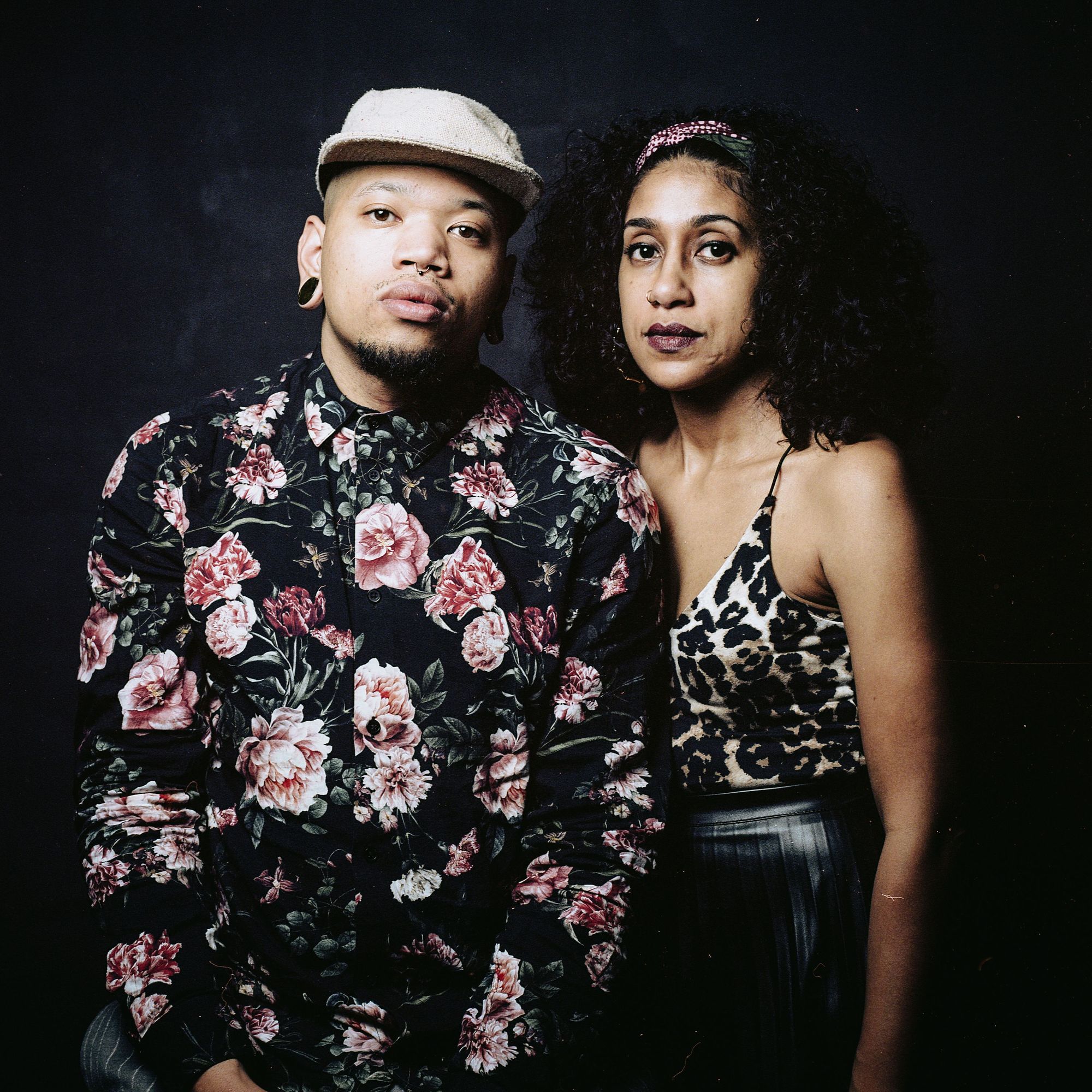
How did you take the seed of the idea for the school and actually get started? Starting a school from scratch sounds pretty daunting.
In the beginning, I was thinking about the project as an ongoing publication where these issues of Black radical politics and Black art and design could be developed into a curriculum. But as we got started, we ended up pushing the publication idea aside because we had the opportunity to start an after-school workshop series. Our first program as The Black School was this semester-long workshop series with a school in Bed-Stuy. It didn't really work out the way we hoped, so after that, we had to shift our mindset and start partnering with other schools. That was the silver lining to the failure of the initial program: it allowed us to prototype and iterate our workshops over time. Overall, starting small and experimenting allowed us to build an ecosystem, and now we feel like we're more than ready to scale up since we have the ecosystem worked out over years of iteration.
In many ways, you’ve approached making a school like making an artwork—it feels very iterative and adaptive. How are you balancing your own creative practices within this project? Does it all feel related?
In terms of our individual practices, we both always worked in public-facing ways, and often in installation. When you do enough installation projects, you realize that the constraints of building an installation can feel similar to going into a school and trying to make a unique experience for the students. It's like, yes, you have some freedom to reinvent what’s in the room, but the ceiling's always going to be this high, and the walls are always going to look like this.
In terms of the content of the school’s curriculum, our practices were already aligned. I've always been working in a way that looks at the history of Black people, that diaspora, and figuring out how to bring it into the context of the present, and asking how to make that history enjoyable to learn about—versus miserable and depressing, like a lot of people can find it.
I've also always balanced a studio-based practice with a public-facing practice. Once I make an artwork, I’ve always been like, “Now, how do I share this with people?” Teaching is that—it's a creative way to share an experience or the learnings around a topic.
We’re trying to approach artmaking in a way that decolonizes traditional notions of fine art. It’s like, “Okay, I want to build a school that is relevant and inspiring to our youth. So how can I do that? Maybe I don't have a photography background, but I can leverage my relationships with Black photographers like Tiffany Smith and make a space and find a group of young people to work with.” I think that human-to-human interaction is an art form, and just bringing people into a space and setting the vibe is an art form, too.
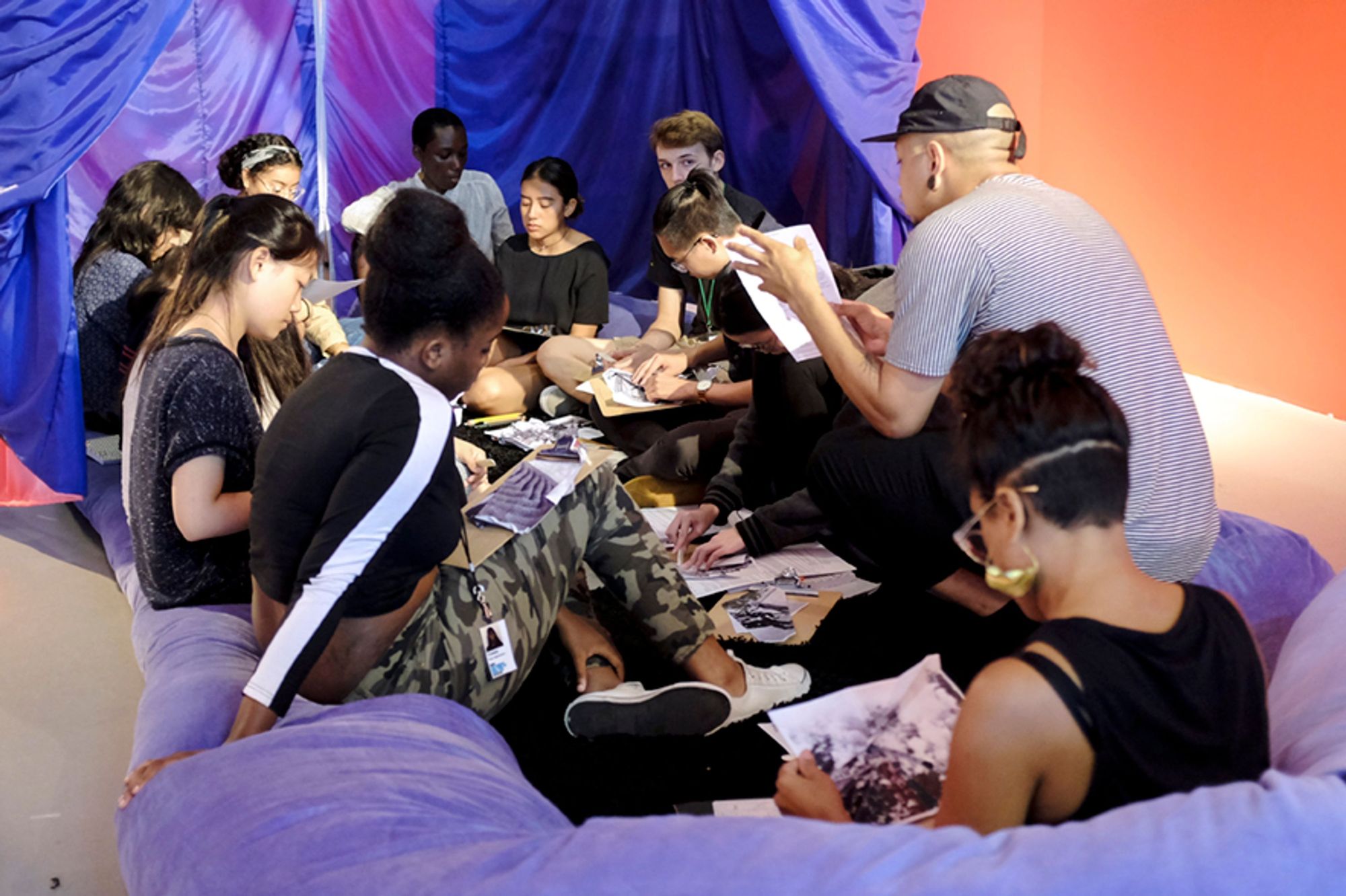
When you look at more established institutions, they often become so mired in bureaucracy that they have no adaptability, and can start to fail over time. Do you think community education, or more creative and adaptive education like what The Black School offers, could ever be offered at the scale that the existing public education system is offered?
I think yes, but that’s not our project, you know? Our project is more about asking, “What type of spaces do we like to learn in?” And then, “How do we use that as our model for the school, as opposed to this factory system that we have now?” If we were to present a future vision for education, it would definitely be more community-based. It would also be outward-facing—there would be no fence around the school. The school would be the center of the entire community.
We value transparency in the way we work—especially now, as we're working towards really scaling up—because there's only so much we can do. We hope to be able to create some kind of database for our curriculum, and other folks' curriculum, so other schools can use them too. We're also working with architects who are willing to share their drawings of the school, because we would love for other people to be able to take this model and create not only community spaces, but also homes. That’s another major issue in our communities, and especially in New Orleans—lack of access to housing. We're excited about modeling a low-cost, sustainable building structure for Black people, and other people of color, to have access to.
But yeah, like Joseph said, we’re focused on what we want to do, because everybody has a role in moving things forward. Some people are here to get up in the museum space and tell them what we need, and some people are here to get up in the school boards' face and tell them what we need. Then other people are here to create alternate models for how those spaces can evolve, right? We can’t all take on everything. In our work, we're not trying to reform any Trump voters. They all seem very firm in their places of hate. [Laughs] And I'm not going to spend my life's energy on that, you know what I mean? Similarly, the education system is very firm in its place of not actually teaching people how to think and learn and be critical, active citizens. They seem very committed to the track that they're on. So while I hope that they will change, in the meantime, we're just going to create the things that we feel the world needs for ourselves.
One of our key principles is Black self-determination. That means, how can we as a community do for ourselves what the mainstream society has not done for us? We know what we need, so now we have to move and react accordingly. And obviously, being able to scale our efforts up in a way that's sustainable and replicable would be great. Right now we've got this successful crowdfunding campaign going that hopefully continues to be successful to the end. But every crowdfunding campaign that goes up is not going to be able to raise $100,000 or more. So, even if we could build a million-dollar campus for our project, that's not what we want to do, because we want to build something that other people can create, too.
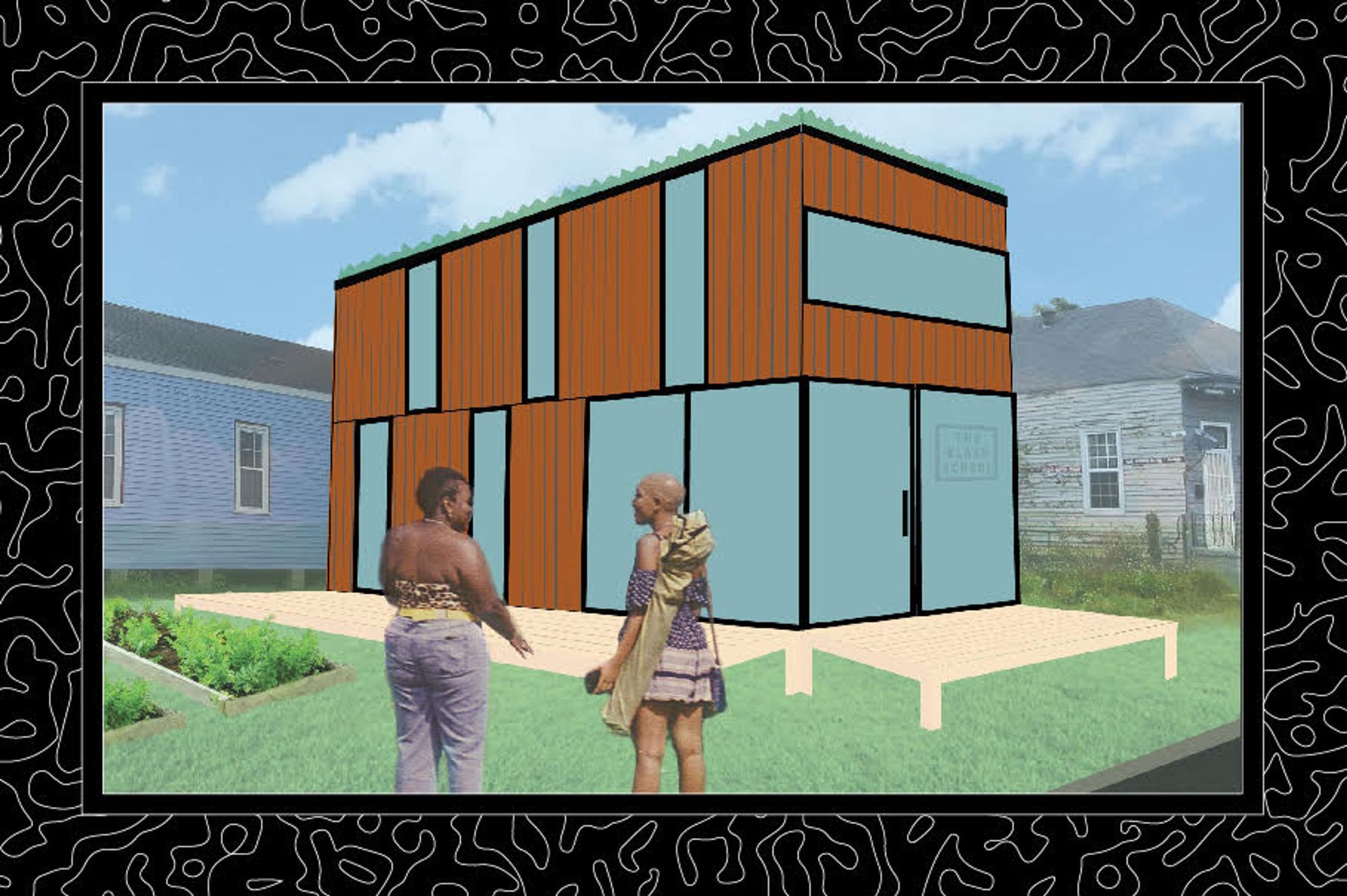
That's a really important point. It's not always about how much you can do; it's more about how you can set a sustainable model. For The Black School, how are you thinking about long-term sustainability?
There's a constant push and pull of trying to find that balance. So again, we've been prototyping and iterating. For funding early on, we were writing a lot of grants. We got told “no” a lot, but we got just enough “yeses” to keep it going. Recently, we've been diversifying our revenue sources to make ourselves less dependent on grants. We put up a shop where we sell learning resources, T-shirts, bags, books, and other publications.
Our new design studio is another funding stream. We see that as a way to sustain ourselves beyond grants and donations, because it can be a more constant stream of revenue that will put us on a solid foundation.
With the design studio, we're also training young people to be able to get staff positions in the design firm, so they can make money off of their creativity. And at the same time, we’ll be making money for the organization by offering those design services.
I was also going to say that in New York, we've been able to sustain ourselves through university teaching, in addition to all the stuff we do for The Black School. One day maybe we'll be able to build up the shops and design studio and things like that to be lucrative enough that we don't have to teach for other institutions to pay the bills, but for now, we teach a few classes a week. It’s also worth noting that while we live in NYC now, we’re moving to New Orleans to establish the school. And the cost of living is less down there.
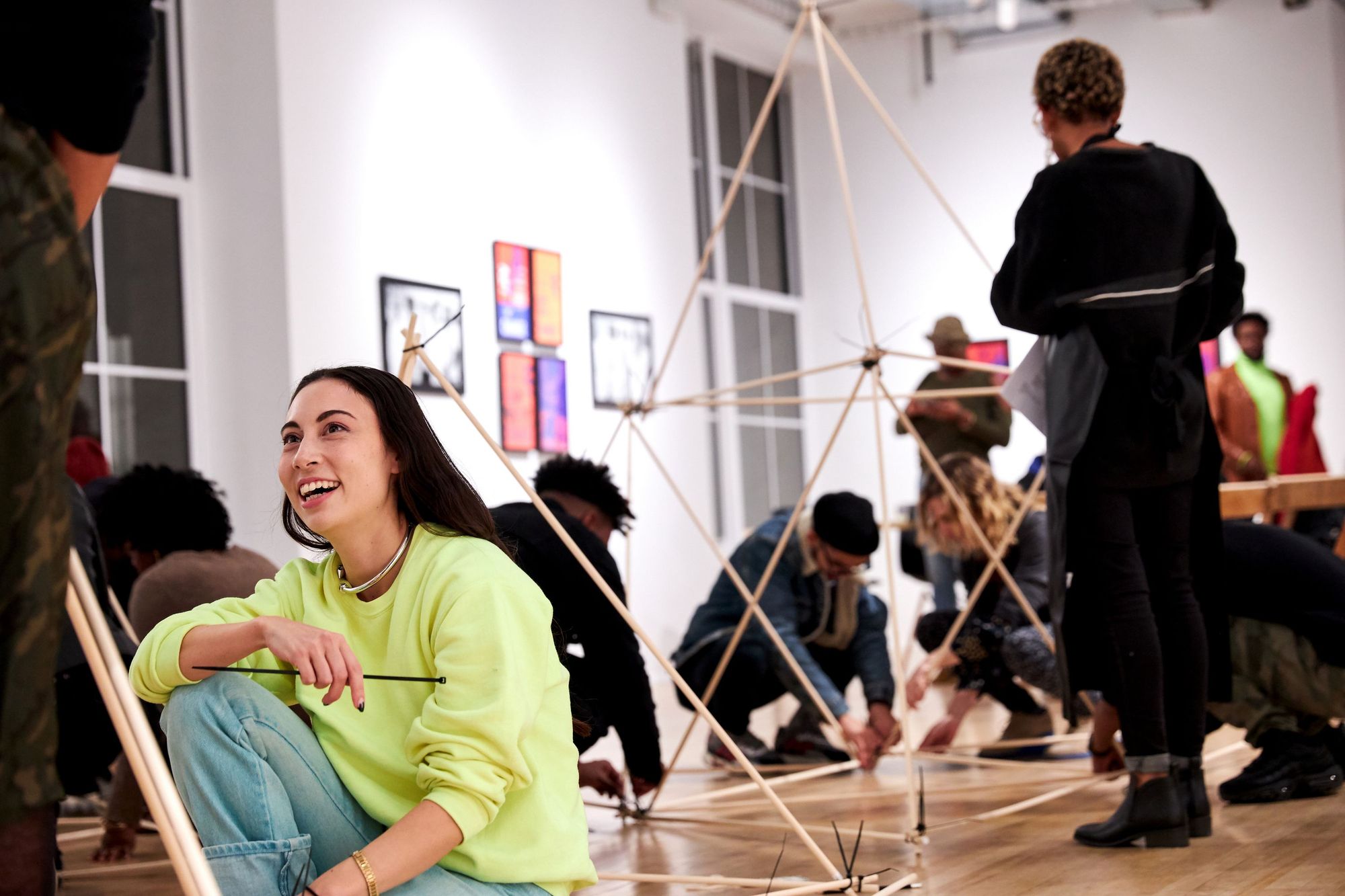
It seems smart to get started in New York City, where you have access to so many partner organizations, and you can establish yourself a little more experimentally. Then you can take the project to a more affordable city to scale it up.
Yeah. That wasn't the intention; we didn't plan it like that, but we did build up our social capital in NYC. And going to New Orleans is kind of the perfect exit strategy. [Laughs]
The first time we started thinking about moving to New Orleans was not to build a structure for the school, it was when we got pregnant. We started thinking about moving for the same reasons that every other young family has thought about leaving New York City. Not that it isn't possible to stay here with kids—you can definitely have an amazing childhood in New York City—but it's a lot. It's hard.
The world is changing, too. When I moved to New York City, New Orleans didn't have the creative community, or the creative industry, that it has now. Over the years, the world changing created an opportunity that I didn't necessarily see for myself there. I moved to New York because I knew once I graduated I'd have access to jobs that didn’t exist in the South or the Midwest. But now that's changing, slowly but surely.
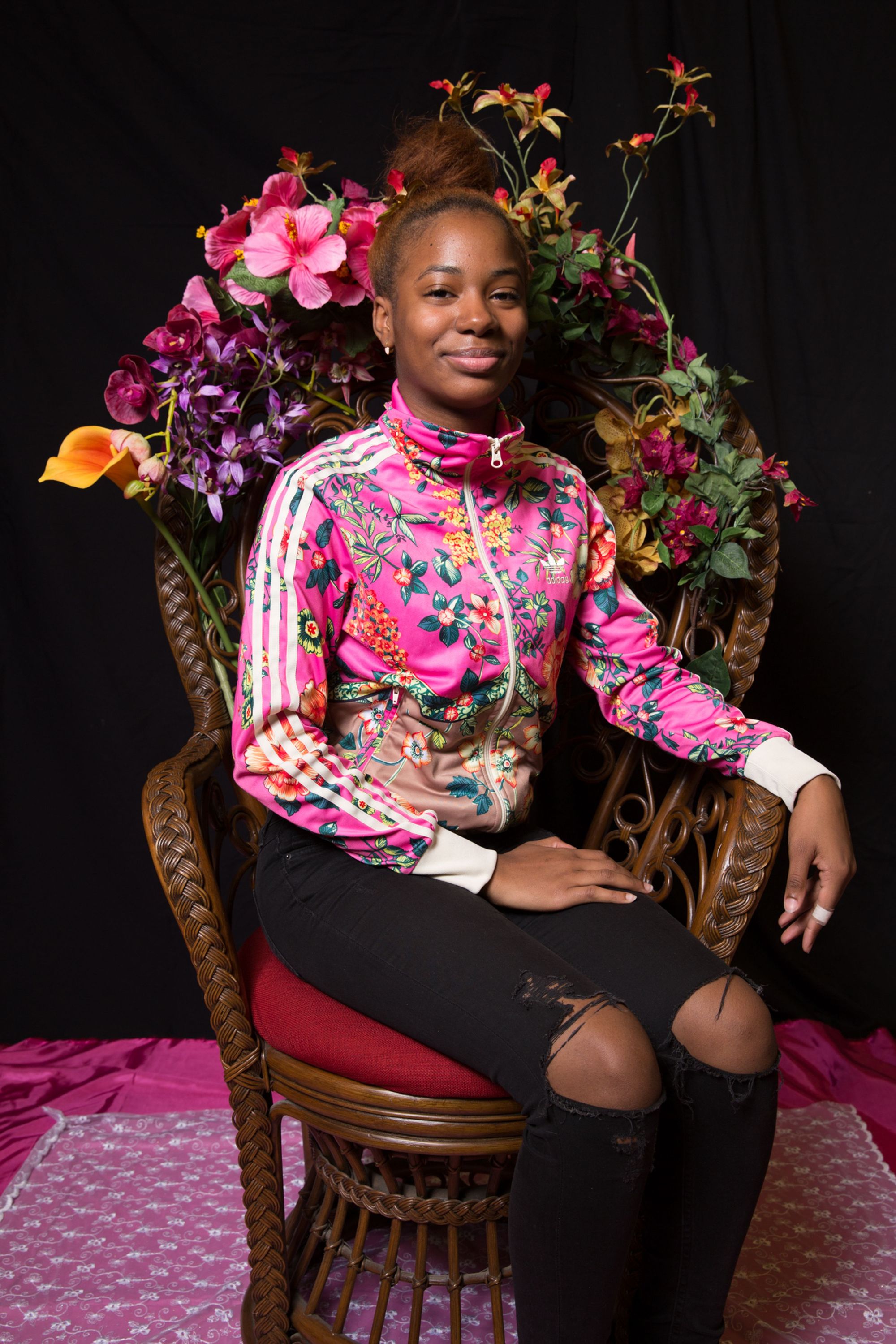
For someone else thinking about starting some kind of creative institution from scratch, do you have any key pieces of advice to share?
Something I’ve learned is how important it is not to stand in your own way. It's so important to not be your own worst enemy by telling yourself no before somebody else does. So yeah, that's my main advice—especially for women. We're often socialized to be extremely cautious, and to feel like we have to have every single question answered before we can take steps forward. But this is not true. If you have some experience and a great idea, you should believe in yourself and try. Go for it.
Also, it’s important to have a community who believes in you. For The Black School, it’s not just us who's leading this charge. The impetus for starting the school was being in a community of Black artists and designers. Now there are also writers and other creators, but we’re united because we all went through the same thing. We all went to art schools that were just not built for us, you know? We all had traumatic experiences, and we all wanted to take the skills that we had and to do something different. That's pretty much what sustains The Black School: having a community of experts who all believe in the same thing. So I guess the advice here is about the importance of building that community out first.
I think people tend to get ahead of themselves, and think they have to have everything figured out at the beginning, rather than scaling things up with the support of their community over time.
Yeah. We started with an idea, and it worked out, but not because we had trademarks or business plans or bank accounts. We didn’t have any of the technical things that a lot of people prioritize before they even know what they're doing. I’ve seen so many people go through this process of what they think they're supposed to do before starting something, without even testing the idea first. But if we had put all of that stuff upfront and then tried to do the after-school program at this one school, as we originally thought the plan would be, we would have just failed. So yeah. Test before you invest, iterate, and then refine, you know?
What are some action items you can give to people reading this interview? What should everyone do to help make progress in this moment?
If you haven’t yet, check out our campaign. We need as many eyes as we can get on this effort.
Beyond that, some of the best advice I've heard for this moment—a moment in which everybody's developing an awareness of the injustice that has been constant for Black people in this country—is from Yaba Blay. She said, “Don’t just Google something before you go to a Black person and ask them questions. Look up books.” The current New York Times bestsellers list is full of texts that explain this moment, and the moments that we've been having in this country, and throughout the world, since the beginning of the transatlantic slave trade. Our ancestors have documented these things. So yeah, get into those well-thought-out pieces of literature and art that talk us through these moments, versus trying to solve it all through Instagram posts. [Laughs] Read James Baldwin, Toni Morrison, Angela Davis, and Assata Shakur. They've laid it all out. The solutions are all there.
I second that. Listen to our ancestors. Listen to radical Black history, and radical Black pedagogues, because they have gone through this and they've developed models and solutions for this, and all we really have to do is put those solutions into practice.
Subscribe to Broadcast